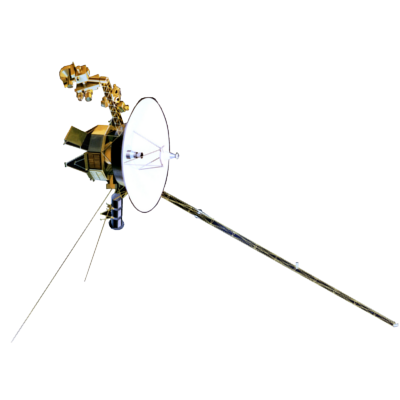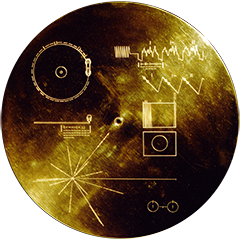Voyager LECP Data Analysis Handbook
Data File Descriptions
Supplementary EDR
Right Ascension and Declination Algorithm
The PI may wish to compute S/C centered right ascension and declination angles of his boresight or optic axis relative to the Earth Mean Equator and Equinox of 1950.0 (EME50). To obtain these angles the following two step algorithm is offered.
Step 1. Rotate ECL50 Unit Vector to EME50 Unit Vector.
The instrument boresight or optic axis unit vector is available from the SEDR relative to the Earth Mean Ecliptic and Equinox of 1950.0 (ECL50). This unit vector must be rotated through the mean obliquity of the ecliptic (angle between the ecliptic and equatorial planes) at 1950.0 to obtain the EME50 unit vector. The following transformation matrix will accomplish the required rotation.

Step 2. Compute the Right Ascension and Declination Angles.
Once the unit vector has been transformed to EME50 coordinates, the right ascension and declination angles can be computed by using the following equations:
α = Tan-1 (yEME50/xEME50)
δ = Sin-1 (zEME50)
Where α is the right ascension angle, δ is the declination angle and xEME50, yEME50 and zEME50 are the x, y and z components of the EME50 unit vector.
Return to SEDR Table of Contents
Return to Data File Descriptions main page.
Return to Voyager
LECP Data Analysis Handbook Table of Contents.
Return to Fundamental
Technologies Home Page.
Updated 8/9/19, Cameron Crane
VOYAGER 1 ELAPSED TIME
*Since official launch
September 5, 1977, 12:56:00:00 UTC
VOYAGER 2 ELAPSED TIME
*Since official launch
August 20, 1977, 14:29:00:00 UTC
QUICK FACTS
Mission Duration: 40+ years have elapsed for both Voyager 1 and Voyager 2 (both are ongoing).
Destination: Their original destinations were Saturn and Jupiter. Their current destination is interstellar space.



